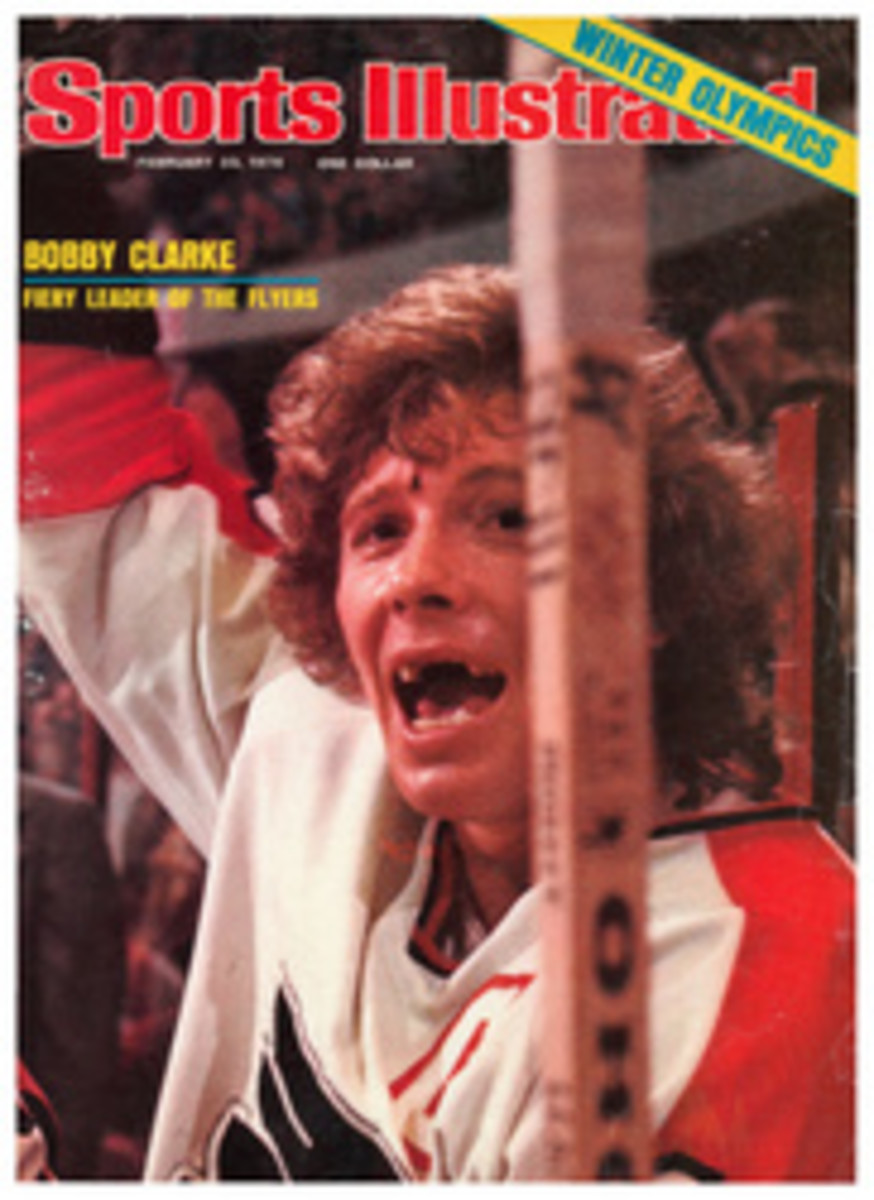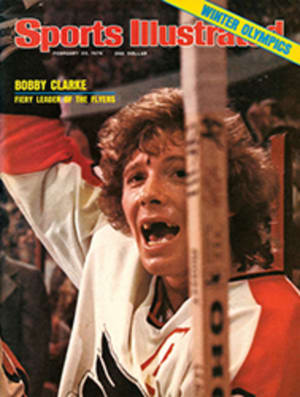
HE WAS RIGHT ON THE BUTTON
By the time the first 4½ hours of ABC's Winter Olympic coverage had been completed, my notebook contained far more negative jottings than positive ones: "Preview show, Bridge to Gold, has poignant touches, decent flashbacks, but runs too long and is too melodramatic.... Camera work of U.S.-Yugoslavia hockey match resembles Andy Warhol movie being played in reverse.... Pierre Salinger is wasting my time with his reports on Innsbruck's social life.... When will this network mature enough to quit singing hosannas to itself...? Pierre Salinger is wasting ABC's time.... Jackie Stewart is the ultimate athlete-as-announcer; says nothing in no known language.... If announcers feel compelled to name "prettiest girls," why don't they get themselves assigned to the Miss Universe contest...? Pierre Salinger is wasting Pierre Salinger's time.... After such a poor start, how will ABC get through 39 more hours of Olympic telecasts?"
The answer: very well. So well, in fact, that the network's overall coverage deserved high marks, and its camera work and video editing set new standards for TV sports. The first indication of what ABC would accomplish came during the second telecast, when the cameras caught skier Werner Grissmann taking a hideous fall. The spill was replayed twice, then the cameras focused on the agony on Grissmann's face as he was carried off. With those pictures ABC showed that such events as the downhill require not only speed and grace but also a great deal of courage. That moment set the tone for the rest of the shows.
Airing 43½ hours of remote sports broadcasting during a 12-day period represents a vast outlay in manpower and money for a network. ABC's crew in Austria included about 400 people. It paid $10 million in rights fees for the Winter Games and had to come up with another $5 million to cover production and satellite expenses.
Had a big gamble by the network not paid off, the Olympics could have cost ABC far more. Its decision to broadcast nearly 75% of its Games coverage during prime evening hours was a risky one. If too few viewers had watched the Olympics, the telecasts could have impaired the network's position in its ratings battle with NBC and CBS. After years of trailing badly in the three-way race for evening viewers, the network this season had made impressive gains. Numerous industry experts felt that by preempting many of its regular shows to put on the Olympics ABC would sacrifice those advances. As they often have before, the experts underestimated the popularity of well-produced sports broadcasting. The Olympics smothered the competition, averaging 15.9 million households per night through the first week, and enabled ABC to move ahead of NBC into second place in the ratings.
That the U.S. had at least one medal winner eight of the first nine days of competition certainly helped the ratings, but there were other more important factors that made ABC's coverage so popular. One potential problem was that the Winter Games have 37 events, 164 fewer than the Summer Games, but through the extensive use of pre-filmed material on the leading competitors and intense preparation for on-site coverage, ABC was able to maintain interest. "For example, we knew that the men's downhill would be a heck of an event," says Geoff Mason, planning director for the Olympic programs. "We began by asking the local experts how the course would be run. Using this information, we started three years ago figuring out how we would cover the race." The network took an equally meticulous approach to other events. Then, last winter, it firmed up its camera locations by convincing the Austrian Federations to hold unofficial pre-Olympics in every sport at every venue.
For the downhill events ABC had 14 cameras covering the slopes, including one about 1½ miles away from the Axamer Lizum venue that was equipped with an 18-1 zoom lens. All this preparation paid off when the men's race turned out to be one of the most dramatic in Olympic history.
Costarring with the cameras was 46-year-old Dick Button, gold medalist in figure skating at the 1948 and 1952 Olympics. Aspiring athlete-announcers should be forced to go to school on Button. He never refers to his athletic accomplishments or tells jokes. He uses the word "great" so seldom that his announcer's card should be pulled. Although he seems to have been around figure skating since Sonja Henie was on double-runners, he still works at his job and imparts his findings in a way that relates exactly to what the viewer is seeing. At Innsbruck he sometimes seemed to know the skaters' programs better than they did. And even though Button covered a sport in which petty jealousies and nationalism often affect the scoring, he boldly expressed assessments of performances that consistently held up.
Before the opening of the skating competition Button explained the arcane judging system and described how the various figures should be made. This was complicated business, but his presentation of it was lucid. When disputes arose over the scoring of some judges, Button pressed them for the reasons for their grades. He did not get satisfactory answers every time, but his was the sort of tough questioning that is too frequently missing from televised sports. As an expert functioning as an announcer, Button never scored lower than a 5.8. And, like his colleagues behind ABC's cameras, he got more than his share of 6.0s.
PHOTO
A FORMER GOLD MEDALIST CUT A SHARP FIGURE FOR ABC

